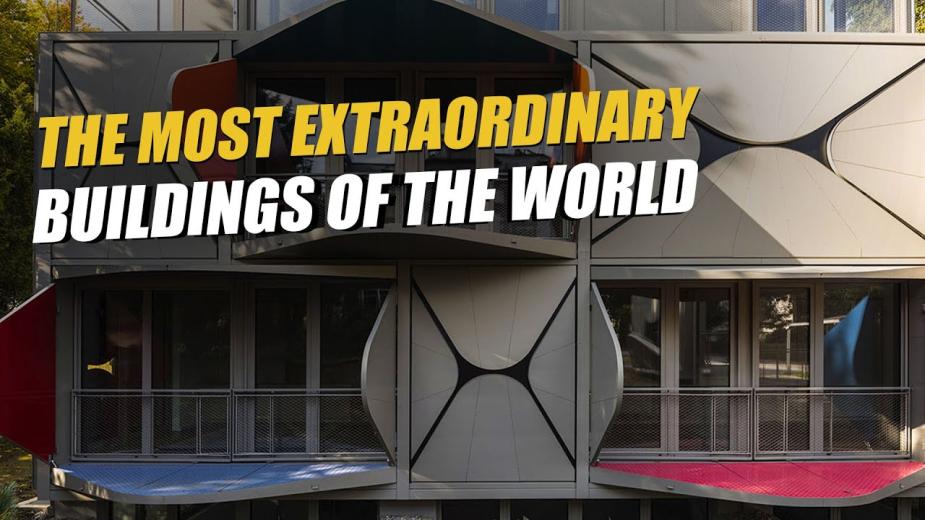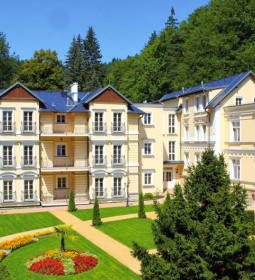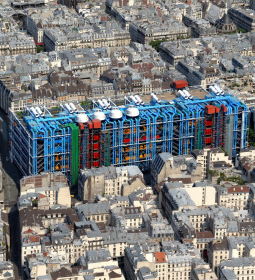The current level of scientific and technological progress has become a natural development and the result of the activities of great scientists and engineers, architects and designers of the past, as well as the flight of imagination and ambitions of their patrons. For a medieval ruler, the best way to show his superiority was to build an architectural masterpiece that could put the same buildings in the belt of his neighbors. Thus, three generations of the Medici built a cathedral in Florence...
Little has changed over the years, except that monarchs have been replaced by other forms of government. But democracies and autocracies also need projects! Some - to amuse their pride, others - for the support of the electorate. Let's talk about some of these projects.

American Highway System
The U.S. Interstate Highway System is the top in terms of cost in the shortlist of infrastructure projects in the world: its final cost exceeded initial calculations many times over and amounted to an incredible $459 billion.

The initiator of this grandiose undertaking was President Dwight D. Eisenhower, who offered the project as a key element of national defense. Nebraska became the first state to complete all work on its part of the highway system in 1974, 18 years after the project began. The completion of the entire system was marked by the completion of the last section of I-70 through Colorado in 1992.
Eurotunnel
In the honorable tenth place among the largest and most expensive projects in the world is the Eurotunnel - a unique tunnel laid under water and connecting the coasts of France and England. The 31 km long tunnel was constructed due to close cooperation between 15 companies from both countries, and the total cost of its construction finally amounted to $22.4 billion.
In 1988, the Eurotunnel began constructing, and in 1994 it was put into operation. However, during construction there was a tragedy, concerned the death of ten workers. The tunnel structure includes three separate passages: two railway tunnels with a diameter of 7.5 meters and one service tunnel with a diameter of 5 meters. Each of these tunnels stretches 50 km underground, ensuring a safe and efficient connection between France and the UK.
The project was managed by the Eurotunnel financial group, and although the initial estimate was lower, the final costs increased significantly. The main reasons for this were the increased safety requirements and strict environmental protection measures that arose during the implementation of the project.
The Great Tunnel in Boston
The Great Boston Tunnel, or "Big Dig", has considered one of the most expensive infrastructure projects in history. The total cost accounted for $23.1 billion. The construction stipulated to redirect on a large scale several major highways in the Boston area. In addition to it, the core aim concerned a setting a route of I-93 directly through the city center, allowing to relieve traffic flows and improve the city's infrastructure.

The project faced many financial and administrative difficulties. Design errors led to the fact that the state had to spend almost $ 400 million on their elimination and restitution - such unforeseen expenses significantly increased the total budget of the project and led to the fact that the construction of the tunnel was completed ten years later than planned.
Unfortunately, the construction was not without tragedies. During one of the stages of work, an accident occurred - a concrete slab collapsed on a car, which led to the death of a person.
Kansai International Airport
The expenses for constructing Japan's international airport made up to $29 billion, allowing to get a status of one of the most expensive infrastructure projects in the world.
The idea of constructing airport was a consequence of the wish to regain the lost trading positions of Kobe and Osaka, as Tokyo has earned more importance.
The airport was built on an artificial island, which was a necessary step to solve several serious problems. Firstly, it made it possible to protect the facility from the constant earthquakes and tidal waves that often hit this region. When the decision of constructing the airport in the water was made, two goals were achieved - reducing the risk of destruction and guarantee of the passengers and staff safety. In addition, such location contributed to effective solution of the noise problem, which is main characteristic of the operation of any large airport. Locating far from residential areas the impact of noise on the environment is minimized, which is especially important for densely populated areas of Japan.
Over the years, new engineering solutions have been introduced to the design of the airport, as it is required to prevent its gradual sinking due to unstable ground and geological features of the area. In 2012, a second terminal was launched, connected to the first free shuttle service, allowing to significantly increase its capacity and convenience for passengers.
California High-Speed Rail
The California High-Speed Railway, which value is amounted to $33 billion, has been constructing since 2015. Putting on the operation is scheduled for the first half of 2029. However, it can already be said that the project has significantly exceeded the original budget.

This railway was designed for connecting the largest cities in California and neighboring states using high-speed transport. The realization of this project allows to significantly reduce travel time, as well as becoming an environmentally friendly alternative to air and car travel. The idea was to create a network that would provide fast, convenient and cost-effective connections between metropolitan areas such as Los Angeles, San Francisco and Sacramento. The first stage of construction will connect Merced station with Bakersfield, which will become the basis for the future highway. Ultimately, the project should directly link Los Angeles and San Francisco, and the trains that will be used on this high-speed line will be able to reach speeds of up to 350 km/h.
Songdo International Business District
The Songdo International Business District, located in South Korea near Incheon International Airport, is one of the most ambitious projects of our time, with a total cost estimated at $40 billion. Often referred to as a "smart city", this area is set to become a benchmark for urban planning and innovative technology. Songdo embodies the idea of a city of the future where everything is aimed at maximum convenience and efficiency: automated processing plants will operate here, and high-speed Wi-Fi will be available anywhere in the city, which will create a digital environment, promoting business development and comfort for residents.

South Korea has become the first country in the world to implement such a smart city model on such a scale.
Dubailand
Dubailand's design is inspired by Arabic folklore, especially the tale of the Arabian Nights. This grandiose $76 billion project was launched with great enthusiasm. When the project will be completed, Dubai can become a hub for global entertainment and tourism. However, in 2008, the global financial crisis occured, leading to the tense economic situation in Dubai, as a result, construction was frozen. In 2013, work resumed, and now the project is once again moving towards its culmination. When Dubailand opens, it will be one of the largest entertainment complexes in the world, if not the largest.
King Abdullah Economic City
The King Abdullah Economic City project is the fourth most expensive project in the world. Although its construction has not yet been completed, the estimated cost of this project will be about $86 billion. Located near Mecca, this city is considered to become a new landmark in Saudi Arabia, which will attract the attention of locals and foreign visitors.
As for economic factors, the realization of the project was possible due to the international investment company Emaar Properties, which has gained global reputation by constructing the tallest building in the world - the Burj Khalifa in Dubai. Emaar Properties obtains recognition thanks to its commitment to innovation and high construction standards. As a result, its participation in the King Abdullah Economic City project ensures its successful implementation. Also Ericsson is responsible for the development of information and communication technologies in this megaproject.














